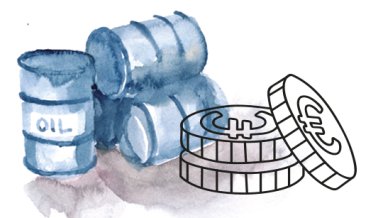Author: NN Investment Partners

Second-quarter earnings were stronger in the US than in the Eurozone. Currencies are crucial to the relative earnings momentum and are currently a tailwind for US companies.
The second-quarter earnings season has shown that currency movements will become an important variable going forward in the relative earnings performance between regions. Other important factors are oil prices, interest rates and macro data.
European companies show relatively soft Q2 results
Second-quarter earnings have shown that absolute sales and earnings growth is positive, especially outside the US. This is logical, as both Japan as Europe are more leveraged towards the global recovery. The rise in operating margins is bigger than in the US, although it is coming from a cyclically depressed level. Secondly, the US and Japan are strong relative to expectations, whereas Europe is only in line. Also the breadth in companies beating estimates is larger in the US than in the Eurozone, where sales are in line with estimates and the earnings surprise is modestly positive, with only about half of the companies beating expectations.
One of the possible explanations for the relative soft performance of European companies is the strength of the euro, which means that sales realized abroad translate into fewer euros. Given the domestic recovery that is well underway in the Eurozone, we should not overestimate the euro’s impact on earnings. However, the currency’s strength is already having an impact on expectations. Earnings momentum has currently turned negative for European companies and has fallen below US companies (see chart). This is a factor that played a role in our downscaling of the Eurozone preference over US. Japan remains strong, but here too, we see the currency risk rising as the US dollar has stopped appreciating against the yen.
The absolute consensus estimates for next year indicate better growth for US earnings (11.8%) than for Eurozone (9.3%) or Japanese earnings (+7.2% for the fiscal year ending 03/19). That gap has widened in the past months, probably because of currency movements. Emerging market earnings are expected to grow 11.4% in 2018. For sector groups, momentum trends in defensive and cyclical sectors are showing some convergence; i.e., there is a rising trend in defensive sectors and a declining trend in cyclical sectors. Financials remain positive.
Situation still favourable for equities…
Looking forward, the outlook for equities remains good but not exceptional. The global economy continues to recover and the Eurozone outlook in particular has improved. The missing puzzle piece remains inflation, which continues to perplex central bankers and economists. A positive consequence of the absence of inflation is that monetary policy normalization will be very gradual. The soft hand of central bankers diminishes the downside risk for valuations, even if these are not cheap from an absolute point of view. A negative consequence is the damping impact on nominal growth, which is the main driver of earnings growth. Persistent low nominal growth will hurt earnings growth over time. Of course, regional differences remain important. The Eurozone and Japan enjoy high equity risk premiums whereas the US risk premium is only around its long-term average. So the situation is still favourable. Good economic and corporate data are coupled with predictable monetary policy and volatility is low. At the same time, investor euphoria is not present and investment flows are positive.
…but how long will it last?
Numerous political developments may pose risks. Tensions are growing in places like North Korea, Qatar and Venezuela. US policy and politics have not become much clearer in the past month; health care reform failed and debate on the budget, debt ceiling and spending also promises to be heated, not to mention the tax chapter of Trump’s election program and the clear risk of a government shutdown. In Japan, Prime Minister Shinzo Abe’s popularity has dropped dangerously low, but his position does not look to be in danger yet. Only Europe has sailed safely around all political perils so far this year. The German elections may become a non-event and the Italian elections are, in market terms, still too far in the future.
Another risk could lie in a new taper tantrum in bonds. We are always just one speech or meeting of central bankers away from this materializing, even if the risk is low. Given the low volatility in bond and equity markets, this may lead to a disproportionate move of markets. A too-rapid depreciation of the USD could also have a disruptive impact on markets.
What does this mean going forward?
Clearly, currency movements will become an important variable in the relative earnings performance between regions. Other factors that will play big roles are oil prices and interest rates. The oil price is crucial not only for energy sector earnings, but also because of its impact on the materials sector through the chemical sector and on the industrial sector through the capital goods sector. Interest rate levels and the shape of the yield curve determine the net interest margin for the financial sector and are important for its profitability.
While the risk of a tantrum-like bond sell-off is low, moderately higher bond yields toward the end of the year are likely. This is linked to a slowdown in central bank balance sheet expansion, as the European Central Bank approaches the end of its quantitative easing program and the US even starts shrinking its balance sheet. The strong macro data could also exert upward pressure on bond yields, although this has not happened yet because of the absence of inflation pressures. A third element is political developments. Election-driven risk aversion has undoubtedly kept Eurozone bond yields low. This factor has faded, but it may flare up again in the coming six months, given the Italian elections to be held in in the first quarter of 2018. Based on these elements, we expect financials to outperform the “search for yield” sectors. We keep financials as a medium overweight and utilities as a small underweight.
For the oil price, we expect a bounce, driven by a rebalancing of supply and demand, currently low speculative positions and seasonal factors. The US driving season is an important factor in this respect. Also, European refinery maintenance peaks in May and Asian maintenance peaks in June, leading to an expectation of the bulk of oil inventory draws to come in Q3 instead of Q2. Meanwhile US refinery runs are at 94% of capacity, above seasonal norms. Better seasonality overall implies that H2 oil demand may increase by +1.5 mbd versus H1. In combination with high OPEC compliance, this should push oil back above USD 50 in the coming months. However, it is unlikely to move much higher. US shale production has become more efficient and once the oil price rises above break-even, output will ratchet up quickly. The number of oil rigs is also rising again, which will act as a ceiling for the oil price. Given oil’s link with the materials sector, we upgraded materials to neutral in June.
Finally, the stronger economic prospects should also favour the non-commodity cyclicals over the defensive consumer stocks. We therefore prefer consumer discretionary over consumer staples and industrials and IT over health care and telecom. We continue to believe that reflation beneficiaries will outperform the bond-proxies and the stable but expensive consumer sectors. It will not be a smooth ride and we will regularly witness setbacks, as central bankers try to tighten policy without tightening financial conditions too much or frightening investors.
.png)


